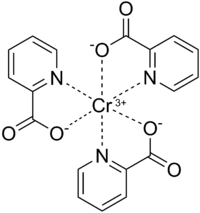
Photo from wikipedia
While developing vaccines targeting surface transferrin receptor proteins in Gram-negative pathogens of humans and food production animals, the common features derived from their evolutionary origins has provided us with insights… Click to show full abstract
While developing vaccines targeting surface transferrin receptor proteins in Gram-negative pathogens of humans and food production animals, the common features derived from their evolutionary origins has provided us with insights on how improvements could be implemented in the various stages of research and vaccine development. These pathogens are adapted to live exclusively on the mucosal surfaces of the upper respiratory or genitourinary tract of their host and rely on their receptors to acquire iron from transferrin for survival, indicating that there likely are common mechanisms for delivering transferrin to the mucosal surfaces that should be explored. The modern-day receptors are derived from those present in bacteria that lived over 320 million years ago. The pathogens represent the most host adapted members of their bacterial lineages and may possess factors that enable them to have strong association with the mucosal epithelial cells, thus likely reside in a different niche than the commensal members of the bacterial lineage. The bacterial pathogens normally lead a commensal lifestyle which presents challenges for development of relevant infection models as most infection models either exclude the early stages of colonization or subsequent disease development, and the immune mechanisms at the mucosal surface that would prevent disease are not evident. Development of infection models emulating natural horizontal disease transmission are also lacking. Our aim is to share our insights from the study of pathogens of humans and food production animals with individuals involved in vaccine development, maintaining health or regulation of products in the human and animal health sectors.
Journal Title: Frontiers in Cellular and Infection Microbiology
Year Published: 2023
Link to full text (if available)
Share on Social Media: Sign Up to like & get
recommendations!